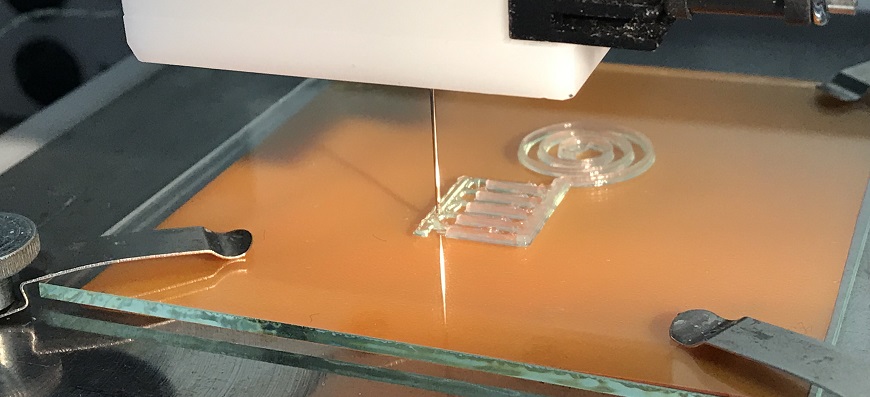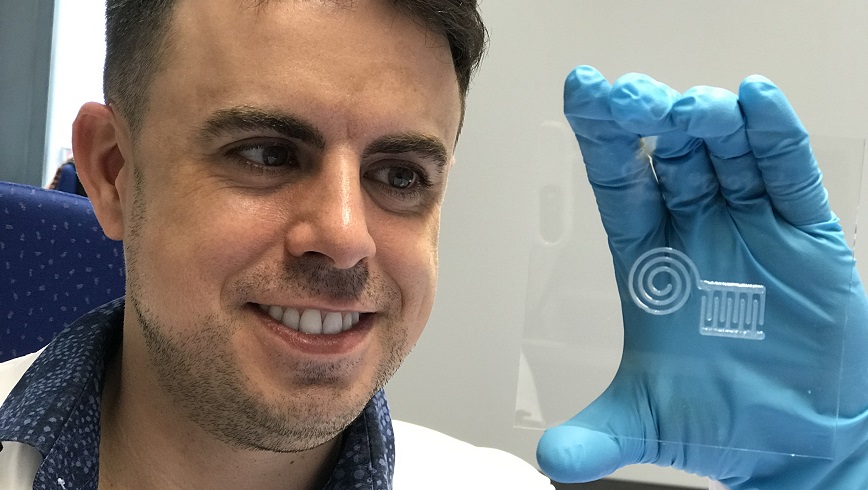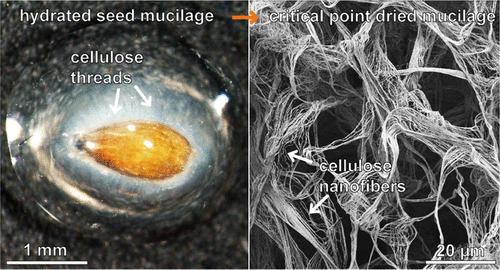A trio of Australian academics (Alan Labas, Benjamin Matthew Long, and Dylan Liu, all from Federation University Australia) have written a September 26, 2023 essay about nanocellulose derived from food waste for The Conversation, Note: Links have been removed,
Food waste is a global problem with approximately 1.3 billion tonnes of food wasted each year throughout the food lifecycle – from the farm to food manufacturers and households.
Across the food supply chain, Australians waste around 7.6 million tonnes of food each year. This costs our economy approximately A$36.6 billion annually.
In a recent study published in Bioresource Technology Reports, we have found a way to use food waste for making a versatile material known as nanocellulose. In particular, we used acid whey – a significant dairy production waste material that it usually difficult to dispose of.
…
For those who may not be familiar with nanocellulose, a lot of research was done here in Canada with a focus on using forest and agricultural waste products to produce nanocellulose. (See the CelluForce and Blue Goose Biorefineries websites for more about nanocellulose production, which in both their cases results in a specific material known as cellulose nanocrystals [CNC].) There’s more about the different kinds of nanocellulose later in this post.
The September 26, 2023 essay offers a good description of nanocellulose,
Nanocellulose is a biopolymer, which means it’s a naturally produced long chain of sugars. It has remarkable properties – bacterial nanocellulose is strong, chemically stable and biocompatible, meaning it’s not harmful to human cells. This makes it a highly marketable product with applications in packaging, wound treatments, drug delivery or food production.
Then, there’s this about the production process, from the September 26, 2023 essay, Note: A link has been removed,
The traditional approach for making nanocellulose can be expensive, uses large amounts of energy and takes a long time. Some types of nanocellulose production [emphasis mine] also use a chemical process that produces unwanted waste byproducts.
By contrast, our new approach uses just food waste and a symbiotic culture of bacteria and yeasts (SCOBY) – something you may be familiar with as a kombucha starter. Our process is low cost, consumes little energy and produces no waste.
…
… Lovers of home-brewed kombucha may actually be familiar with the raw nanocellulose material – it forms as a floating off-white structure called a pellicle. Some people already use this kombucha by-product as vegan leather.) A similar pellicle formed on our acid whey mixture.
I’m not sure if the “types of nanocellulose production” the writers are referring to are different types of nanocellose materials or different types of nanocellulose extraction.
A little more about nanocellulose
The Nanocellulose Wikipedia entry highlights the different materials that can be derived from nanocellulose, Note: Links have been removed,
Nanocellulose is a term referring to nano-structured cellulose. This may be either cellulose nanocrystal (CNC or NCC [nanocellulose crystal]), cellulose nanofibers (CNF) also called nanofibrillated cellulose (NFC), or bacterial nanocellulose, which refers to nano-structured cellulose produced by bacteria.
CNF is a material composed of nanosized cellulose fibrils with a high aspect ratio (length to width ratio). Typical fibril widths are 5–20 nanometers with a wide range of lengths, typically several micrometers. It is pseudo-plastic and exhibits thixotropy, the property of certain gels or fluids that are thick (viscous) under normal conditions, but become less viscous when shaken or agitated. When the shearing forces are removed the gel regains much of its original state. The fibrils are isolated from any cellulose containing source including wood-based fibers (pulp fibers) through high-pressure, high temperature and high velocity impact homogenization, grinding or microfluidization (see manufacture below).[1][2][3]
Nanocellulose can also be obtained from native fibers by an acid hydrolysis, giving rise to highly crystalline and rigid nanoparticles which are shorter (100s to 1000 nanometers) than the cellulose nanofibrils (CNF) obtained through homogenization, microfluiodization or grinding routes. The resulting material is known as cellulose nanocrystal (CNC).[4]
Nanochitin is similar in its nanostructure to nanocellulose.
…
Interestingly, Canadian development efforts are not mentioned in the essay until the very end, where we are lost in a plethora of other mentions, Note 1: Links have been removed; Note 2: All emphases mine,
A lthough wood-driven nanocellulose was first produced in 1983 by Herrick[7] and Turbak,[6] its commercial production postponed till 2010, mainly due to the high production energy consumption and high production cost. Innventia AB (Sweden) established the first nanocellulose pilot production plant 2010.[109] Companies and research institutes actively producing micro and nano fibrillated cellulose include: American Process (US), Borregaard (Norway), CelluComp (UK), Chuetsu Pulp and Paper (Japan), CTP/FCBA (France), Daicel (Japan), Dai-ichi Kyogo (Japan), Empa (Switzerland), FiberLean Technologies (UK), InoFib (France), Nano Novin Polymer Co. (Iran), Nippon Paper (Japan), Norske Skog (Norway), Oji Paper (Japan), RISE (Sweden), SAPPI (Netherlands), Seiko PMC (Japan), Stora Enso (Finland), Sugino Machine (Japan), Suzano (Brazil), Tianjin Haojia Cellulose Co. Ltd (China), University of Maine (US), UPM (Finland), US Forest Products Lab (US), VTT (Finland), and Weidmann Fiber Technology (Switzerland).[110] Companies and research institutes actively producing cellulose nanocrystals include: Alberta Innovates (Canada), American Process (US), Blue Goose Biorefineries (Canada), CelluForce (Canada), FPInnovations (Canada), Hangzhou Yeuha Technology Co. (China), Melodea (Israel/Sweden), Sweetwater Energy (US), Tianjin Haojia Cellulose Co. Ltd (China), and US Forest Products Lab (US).[110] Companies and research institutes actively producing cellulose filaments include: Kruger (Canada), Performance BioFilaments (Canada), and Tianjin Haojia Cellulose Co. Ltd (China).[110] Cellucomp (Scotland) produces Curran, a root-vegetable based nanocellulose.[111]
This leaves me with a couple of questions: Is my understanding of the nanocellulose story insular or Is the Wikipedia entry a little US-centric? It’s entirely possible the answer to both questions could be yes.
Why so much interest in nanocellulose? Money
From the September 26, 2023 essay, Note: A link has been removed,
Demand for nanocellulose is growing worldwide. The global market was valued at US$0.4 billion in 2022 (A$0.6bn) and is expected to grow to US$2 billion by 2030 (A$3.1bn). Bacterial nanocellulose produced from food waste can help to satisfy this demand.
This growth is in part due to how we can use nanocellulose instead of petroleum-based and other non-renewable materials in things like packaging. Among its desirable properties, nanocellulose is also fully biodegradable.
…
If you have time, do read the September 26, 2023 essay in its entirety.
H/t to September 27, 2023 news item on phys.org



